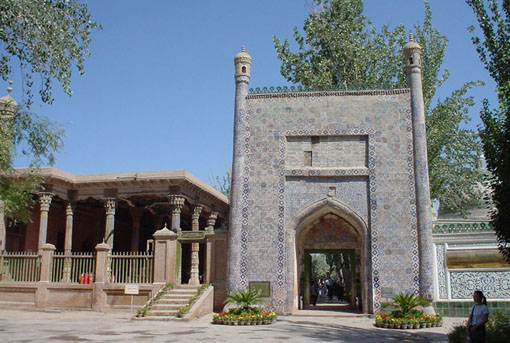Abakh Hoja Tomb
Abakh Hoja Tomb
Five kilometers (3.1 miles) northeast of Kashgar, an ancient Islamic building nestles among poplar trees. With glazed tiles shining in the sun, its tower points to the azure sky. A masterpiece of Uigur architecture, this is Abakh Khoja Tomb, 17th Century family cemetery of the Kashgar area Islamic leader.

In China the tomb is better known as the Tomb of Xiang Fei, the only Uigur concubine among the 41 wives of Emperor Qianlong in the Qing Dynasty (1644-1911). Legend has it that Iparhan, a descendant of Abakh Khoja, exuded an enchanting fragrance without using any perfume, hence the name Xiang Fei (Fragrant concubine in Chinese). She spent 28 years beside the emperor in Beijing, abiding strictly by Islamic doctrines. She wore ethnic costumes and was waited on by a special chef. Before her death at 55 she expressed her desire to be buried in her hometown of Turpan. The emperor so loved her that he had her coffin of clothes sent back to where it is now. This cost 124 people three years and a half. The ancient cart carrying the coffin of Xiangfei still stands in front of the mausoleum, adding a touch of mystery to the building. According to archeological findings, the authentic tomb of Xiang Fei is in the East Qing Tomb near Beijing.

Built from 1640, the tomb covers an area of about five acres. Just inside the gate is a large rectangular courtyard made up of a gate tower, worship walls, Doctrine-Teaching Hall, and tomb chamber.
Abakh Khoja Tomb is admired as a well-preserved Islamic architectural complex not only in Xinjiang, but throughout Central Asia. Xiang Fei's love story intrigues tourists from home and abroad.
|



